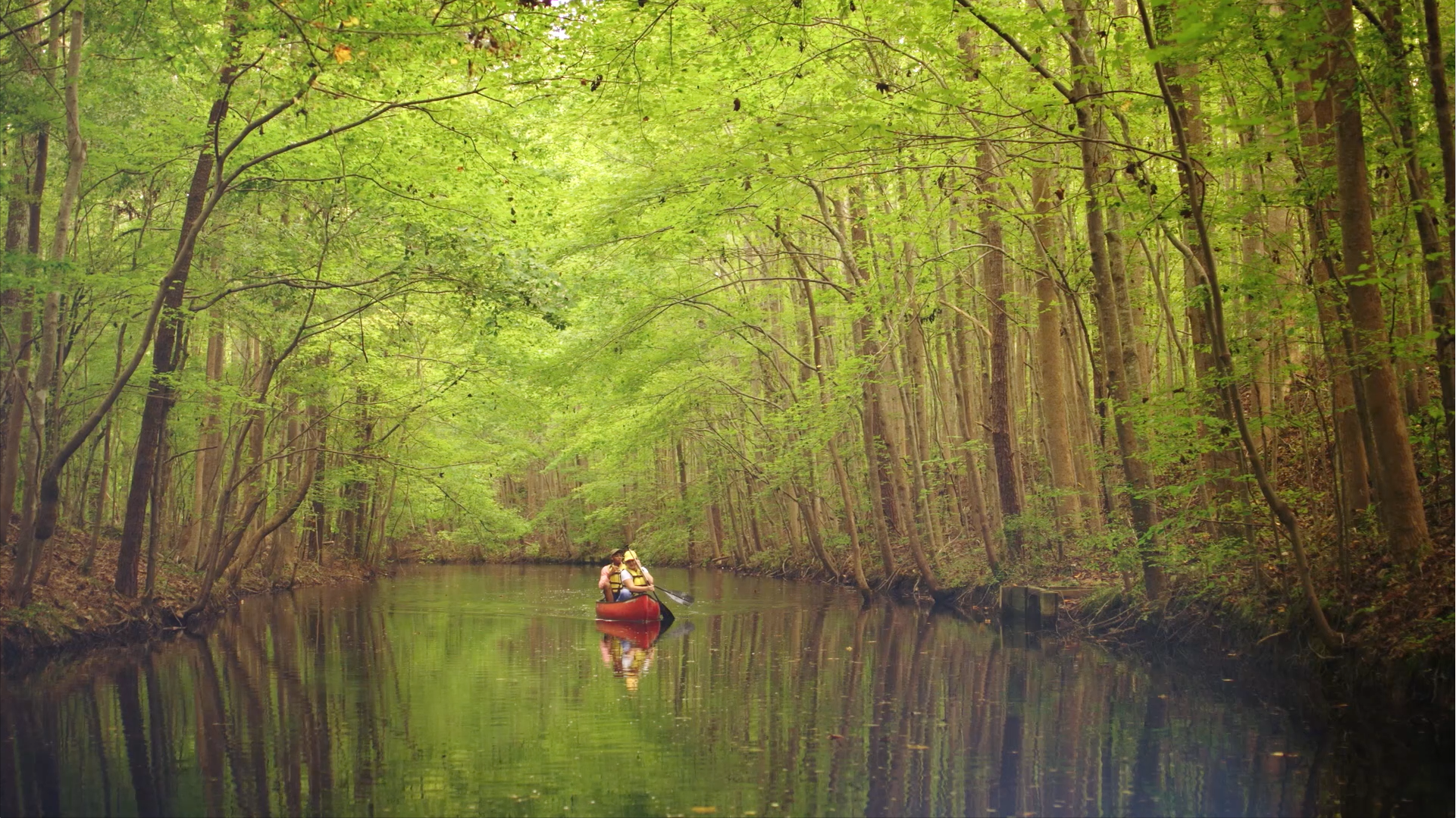Chesapeake has more miles of deep-water canals than any other city in the country. Chesapeake is also home to several stops along the Civil War Trail. The Great Dismal Swap National Wildlife Refuge is nationally recognized as a stop on the Underground Railroad, and Chesapeake also boasts a thriving outdoor community with thousands of unspoiled acres for kayaking, birding, and fishing.

Chesapeake
Chesapeake is an independent city in Virginia, United States. At the 2020 census, the population was 249,422, making it the second-most populous city in Virginia, tenth-largest in the Mid-Atlantic, and the 90th-most populous city in the United States.
Chesapeake is a diverse city in which a few urban areas are located; it also has many square miles of protected farmland, forests, and wetlands, including a substantial portion of the Great Dismal Swamp National Wildlife Refuge. Extending from the rural border with North Carolina to the harbor area of Hampton Roads adjacent to the cities of Norfolk, Portsmouth, Suffolk, and Virginia Beach, Chesapeake is located on the Atlantic Intracoastal Waterway. It has miles of waterfront industrial, commercial and residential property.
In 2011, Chesapeake was named the 21st best city in the United States by Bloomberg Businessweek. Chesapeake is home to the international Headquarters for Dollar Tree. Chesapeake has also been rated by the FBI as one of the top five safest cities of its size in the U.S. Moreover, Money Magazine proclaimed it
as one of the six best places in America to live.
Living in Chesapeake
Chesapeake is one of the cities in South Hampton Roads, Chesapeake was organized in 1963 by voter referendums approving the political consolidation of the city of South Norfolk with the remnants of the former Norfolk County, which dated to 1691. Much of the territory of the county had been annexed by other cities. Chesapeake is the second-largest city by land area in the Commonwealth of Virginia, and the 17th-largest in the United States.
Until the late 1980s and early 1990s, much of Chesapeake was either suburban or rural, serving as a bedroom community of the adjacent cities of Norfolk and Virginia Beach with residents commuting to these locations. Beginning in the late 1980s and accelerating in the 1990s, however, Chesapeake saw significant growth, attracting numerous and significant industries and businesses of its own.
According to the United States Census Bureau, the city has a total area of 351 square miles (910 km2), of which 341 square miles (880 km2) is land and 10 square miles (26 km2) (2.9%) is water.
Chesapeake consists of six boroughs: South Norfolk, Butts Road, Deep Creek, Pleasant Grove, Western Branch and Washington. One of the boroughs, South Norfolk, used to be its own independent city and consolidated the surrounding portions of Norfolk County (extinct) into the City of Chesapeake.
Things to Consider
When choosing a community to live in, the best area for you, might look very different than for someone else. Here are some things to always consider while you are searching.
Commuting - Be aware of travel times? Rush hour traffic in the Hampton Roads area along with the tunnels and bridges should always be considered when choosing a location.
School Districts - If you have children in the public schools you will want to check out Great Schools.org to help you when selecting a neighborhood.
Community - Are you looking for a neighborhood with amenities like clubhouse, swimming pool, community activities, boat or water access?
Resale - It is always wise to consider resale when you are looking for your home. Location is important is as important as home features


